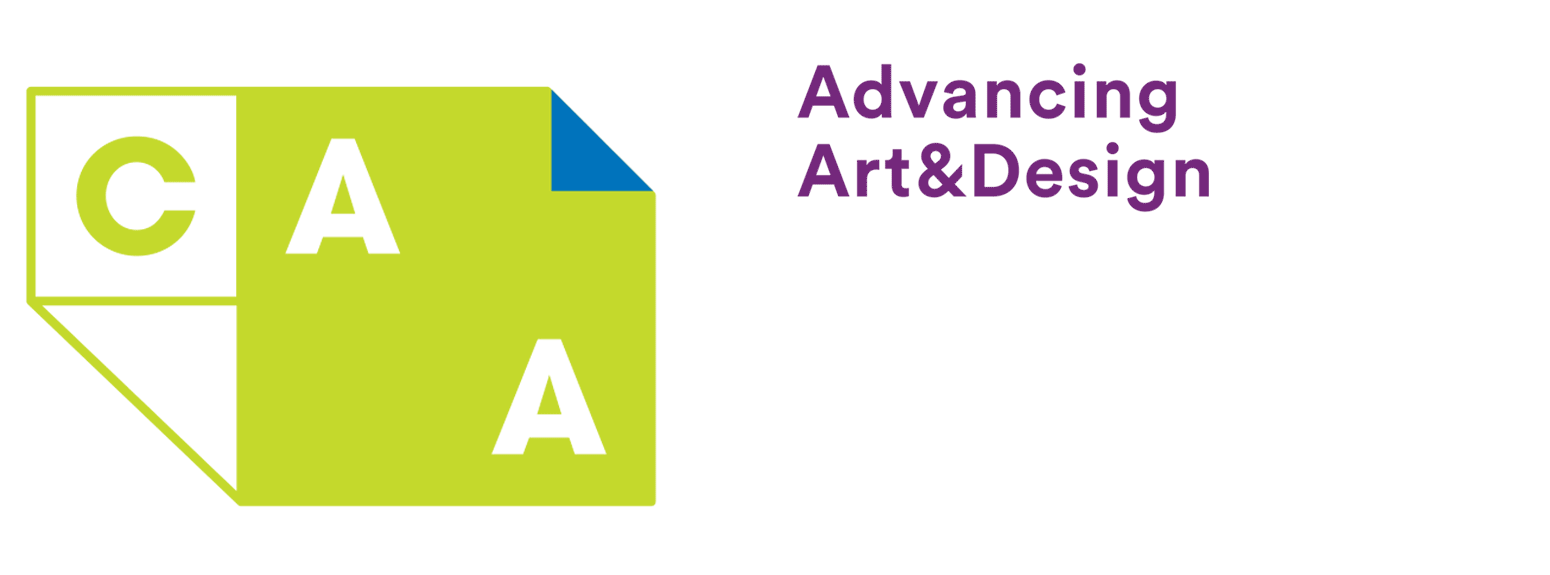CAA News Today
Committee on Women in the Arts (CWA) Picks: November
posted by CAA — November 29, 2021
The November “Picks” from the Committee on Women in the Arts explore spaces between the human figure and its psychic figurations. Each artist featured in the exhibitions traces the vacillations between interior perceptions and the objective contours of an external world eroded by alienation and violence. Whether they draw from traditional genres or experiment with new media, these artists destabilize the grammar of recognizable forms to reveal the vulnerability of human subjectivity and test the possibilities for repair.
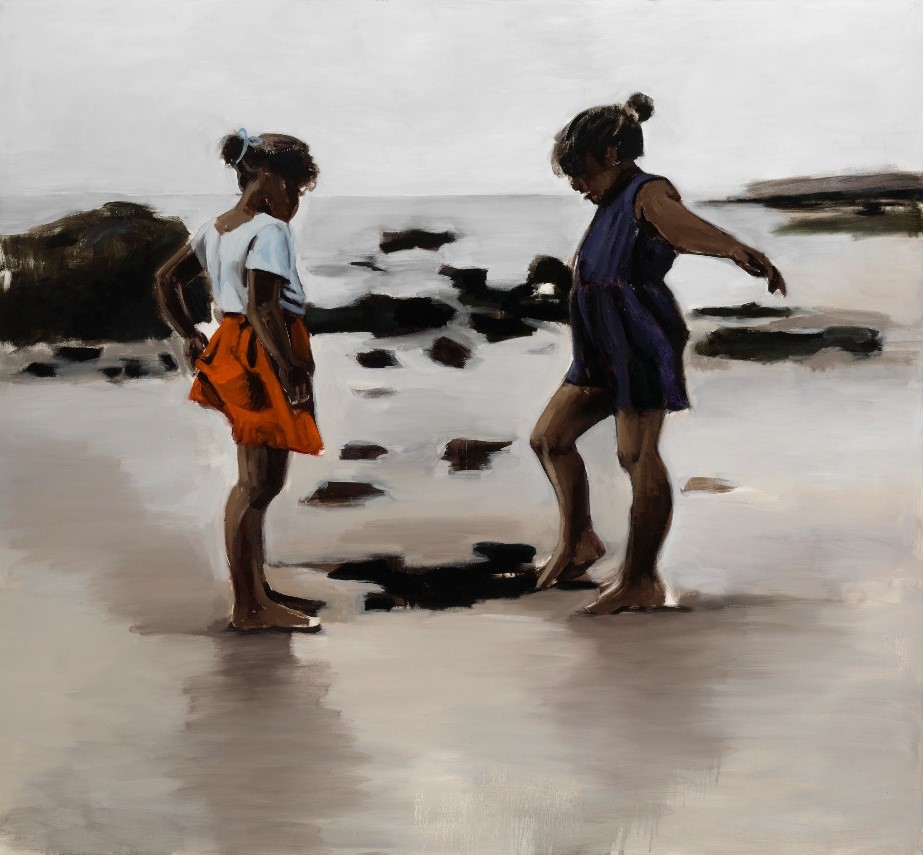
Lynette Yiadom-Boakye, Condor and the Mole, 2011, Arts Council Collection, Southbank Centre, London © Courtesy of Lynette Yiadom-Boakye.
Lynette Yiadom-Boakye: Fly in the League with the Night
October 16, 2021-February 13, 2022
Kunstammlung Nordheim Westfalen, Düsseldorf, Germany
Lynette Yiadom-Boakye paints portraits to evoke the psychic depths of Black subjects while gently keeping them from the demand for full exposure. The fields of rich colors and soft, slightly loose brush strokes in which Yiadom-Boakye holds her sitters allow her paintings to pulsate with an elegance that is tangible but difficult to pinpoint, though it seems to emerge from the value the artist attributes to seeing as a private act. One painting featured in this exhibition, Condor and Mole (2011), seems to illustrate the mysterious camaraderie indicated by the title of the exhibition and links it to the veils of privacy Yiadom-Boakye brings to the painted image . Condor and Mole portrays two Black girls on a beach punctuated with dark rocks; the tide pulls their shadows into tan and blue-grey sheens that continue into the horizon line. The girls are turned to each other as they look down into a dark crevice in the sand. Viewers do not see what they are looking at, and Yiadom-Boakye portrays the playful attunement of their collaboration, expressed through the correspondence of their body language, without providing full access to their shared vision.
Ana Torfs, Dark Spaces Where Things Cannot Be Put
January 10, 2021-February 27, 2022
Museo Universitario Arte Contemporáneo
México City, México
Ana Torfs is an artist based in Belgium and Dark Spaces Where Things Cannot Be Put is her first solo exhibition in the Americas. Working with an idiosyncratic array of materials and sources, Tors makes her subject the contingency of visual perception and the unstable connections among images, words, and knowledge. How do words determine what becomes visible to us? For Tors, this is an aesthetic, historical, ethical question that takes her work into contexts of great consequence. The installation The Parrot and the Nightingale, a Phantasmagoria (2014) exemplifies her interest in language, translation, and power. In it, Tors draws from Christopher Columbus’ travel diaries to provoke reflections on linguistic alienation, curiosity, order, and repression. In dialogue with 81 black-and-white images of tropical nature, Tors presents a female interpreter translating an English version of Columbus’ diary into American Sign Language and then three male interpreters bring the text back to a spoken English fractured with error. The “original” diary and its exploratory record recedes further from vision and the connection to the photographs becomes even more unstable, but Tors suggests that the damage imperial encounters remain. The female translator in The Parrot and the Nightingale, a Phantasmagoria points to the stealth feminism running through Tors’ artwork and her attention to the long histories of depriving women access to the voice of authority. The installation Echo’s Bones/Were Turned to Stone (2020), a carpet overlaid with a recording of a woman speaking in an endless chain of associations, suggests that this gendered displacement into irrationality forces women to carry the deaths embedded in and covered over by sensible, rational language.
November 25, 2021-July 3, 2022
Tate Britain, London
The winner of the 2017 Turner Prize, Lubaina Himid is well-known for her impact on the Black British art movement and her innovative depictions of everyday life in the Black diaspora. This Tate exhibition features Himid’s recent work as well as selected highlights from her influential oeuvre, focusing in particular on her interest and training in the theatre. With vivid colors that appear within slightly unsettling arrangements of geometric forms, Himid stages mise-en-scènes that reflect on diasporic imagining, building, and making. These qualities are evident in Six Tailors (2019), a painting in which Himid has arranged six men of African descent around a table covered in bright turquoise blue. The fabric, scissors, and spools thread with which they work materialize the colored and textured worlds they are in the process of making, which sharply contrasts the painting behind them that depicts the sky and sea as flat gray horizontal lines. Himid’s work as a painter is figured into this meditation on making and registers the losses that compose it.
Pipilotti Rist: Big Heartedness, Be My Neighbor
September 12, 2021-June 6, 2022
Geffen Contemporary, Museum of Contemporary Art, Los Angeles
The first West Coast survey of Pipilotti Rist’s work reveals how much her Pop-friendliness fits with Los Angeles. The playful eroticism, love of sparkle and shine, and hyper femininity that are the Swiss artist’s stylistic signatures all resonate with the city’s central place in the fantasy of making dreams come true. Of course, a dark cruelty lurks within this fantasy, and it therefore makes sense that despite the generosity alluded to in the exhibition’s title, Big Heartedness, Be My Neighbor also reveals the artist’s affinity with figures such as Lynn Hershman Leeson and David Lynch. Surveying more than thirty years of her work, this exhibition highlights Rist’s talent for stretching video to its extremes with scale, color, and sound. For her, video is a threshold into a rich and elastic imaginary that lets interiors and exteriors flow into each other and announces the desire for big-hearted connections.
October 1, 2021-July 10, 2022
Brooklyn Museum of Art, Elizabeth Sackler Center for Feminist Art
Baseera Khan recently received the UOVO Prize for an emerging Brooklyn artist, and with an aesthetics of distortion pushed to theatrical extremes, they make their body a site for realizing spaces of disjuncture between Muslim and American identities. All of Khan’s artworks collage together a struggle with the archive of commodified objects, images, and materials through which Muslim Americans are perceived. Khan’s I Arrive in a Place with a High Level of Psychic Distress (Blue) (2021) encapsulates this struggle and crystallizes the meaning of the kaleidoscopic layers that are a predominant feature of their work. In this photograph, brown hands and legs adorned with silver chains, bracelets, and rings emerge from behind the broken fragments of painted floor tiles. It is a beautiful and violent fight to “arrive in a place,” but also a challenge to the conditions of raced and gendered visibility that materialize on the terrain of the image.
Yoko Ono: Mend Piece for London
August 25, 2021-January 2, 2022
Whitechapel Gallery, London
Yoko Ono’s Mend Piece for London consists of two plain white tables upon which she has placed broken cups and saucers as well as instruments of repair: scissors, glue, twine, and tape. In her instructions she states, “Mend carefully/ think of mending the world/ at the same time.” A gentle reassertion of her central place in the Fluxus tradition and its continued pertinence, Ono also draws from the Japanese tradition of Kintsugi, in which broken pottery is repaired with lacquer mixed with precious metals and silver. Mend Piece for London also exemplifies Ono’s irrepressible commitment to reaching people with her aesthetics of repair and inspiring them to create and hold an image of a peaceful world in their minds so as to thoughtfully cohere all its broken pieces.
Jennifer Packer: The Eye is Not Satisfied with Seeing
October 30, 2021-April 17, 2022
Whitney Museum of Art, New York
The Eye is Not Satisfied with Seeing features 30 artworks Jennifer Packer has produced over the last decade. Emerging from a historical period in which visual media testifies to the state-sanctioned murder of Black people, Packer explores the psychic states and experiences that exceed visual evidence with a lyrical and melancholic vision. Layered with swaths of bright color, discordant fragments, blank spaces, and the weeping lines of vertical drips, Packer’s paintings and drawings are both heavy and light, private and revelatory, understandable and illegible. It seems that for Packer, traditional genres are tools for containing chaotic feelings, giving them form, but also evoking what has yet to be expressed. The still life Say Her Name (2017) is Packer’s response to the 2015 murder of Sandra Bland. The flowers, leaves, and stems of this painted funerary bouquet, loosely suspended before an unstable background of yellow and black, becomes a scrim that evokes the intimacy of identification and the reality of death’s irrevocable distance.
Committee on Women in the Arts (CWA) Picks: October
posted by CAA — October 26, 2021
The October Picks from the Committee on Women in the Arts engage with the notion of space and its rich, multi-layered resonances with politics, gender, sexuality, ecology, diaspora and survival. Our selection features exhibitions featuring the work of feminist and womxn artists who respond to current urgencies and stress the importance of thresholds and their liberatory potential in showing these subjects, histories, narratives and discourses which have been invisible and silenced.
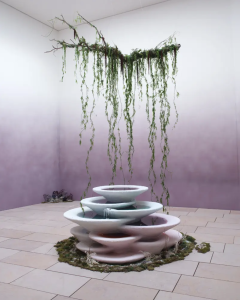
Bianca Bondi, The Daydream, 2021, exhibition view, Fondation Louis Vuitton, Paris.
Sharon Hayes
Ricerche
October 9–November 7, 2021
The Common Guild, Glasgow, United Kingdom
https://www.thecommonguild.org.uk/programme/project/ricerche-6b86
Inspired by Pier Paolo Pasolini’s 1964 film Comizi d’Amore (Love Meetings), Ricerche comprises of several video works presented as ‘ricerche’ or research that navigate intersections between gender, sexuality, politics and contemporary collective identifications in the United States. Hayes’ project with The Common Guild includes three films featuring a range of individuals in which the artist continues her journey of exploration into the entanglements among activism, queerness, love, sexuality and history and their entanglements.
Noémie Goudal
Post Atlantica
October 10, 2021–January 2, 2022
Le Grand Café, Contemporary Art Centre, Saint-Nazaire, France
https://www.grandcafe-saintnazaire.fr/en/expositions/post-atlantica/
Noémie Goudal creates visual stories that via construction of handmade sceneries displaying structural imperfections and playing with perspectives and points of view reveal the process of making an image. Clues that she leaves unveil technical experiments and effects behind constructed scenes that at the first glance do not appear artificial. The exhibition includes works that explore layers of time and space. It features the artist’s new series Post Atlantica, a result of her research into paleoclimatology and her fascination with extreme mutations of landscapes subjected to the force of nature. With this work Goudal invites us to consider, via the image, past and future climate changes.
Frida Orupabo
How did you feel when you come out of the wilderness
September 23–November 21, 2021
Kunsthall Trondheim, Trondheim, Norway
https://kunsthalltrondheim.no/en/utstillinger/frida-orupabo
Frida Orupabo’s art practice reclaims spaces for narratives that are silenced or erased elsewhere. Her physical and digital collages, some of which are featured on her Instagram account @nemiepeba, emphasize the cracks and cuts that need to be sutured with care. Exploring mostly Black visual culture, Orupabo salvages fragments of counternarratives to create a body of knowledge that is rebellious, fugitive and willful. The exhibition presents the artist’s new body of work, including a wallpaper and a wooden sculpture that accompany collages, which engages with survival and the continuous struggle for freedom.
Bianca Bondi
The Daydream
September 22, 2021–January 24, 2022
Fondation Louis Vuitton, Paris, France
https://www.fondationlouisvuitton.fr/en/events/open-space-8-bianca-bondi
Bianca Bondi’s The Daydream transforms Fondation Louis Vuitton’s gallery space into an artificial interior garden offering a multisensorial experience. Inspired by sacred springs, this landscaped place of meditation invites the audience to immerse themselves in reflection and reverie. The artist references rituals and occult practices which connect us to the invisible world. The exhibition features sound designed by Jenn Hutt and flower arrangements designed by Tata Msellati. Olfactive ambience is created by the perfumeur Yann Vasnier. Fostering mutations and transformations between materials, senses and experiences, Bondi’s artistic practice is alchemical, seeking to discover and reveal the intangible.
Eva Davidova
Global Mode > Omnivores
October 5–November 10, 2021
Instituto Cervantes, New York, USA
https://cultura.cervantes.es/nuevayork/en-US/espacios-ocupados-/143561
Global Mode > Omnivores is a solo exhibition of new media artist Eva Davidova. It is part of the Occupied Spaces program inviting multi-faceted collaborations between artists and contexts within which the Instituto Cervantes centres are located. Davidova’s interest in unfixed positions and counterstrategies that disrupt prevailing hierarchies translates into the exhibited single channel video Garden for Drowning Descendants. The work engages with global ecological disaster and interspecies dependency to reflect on the current condition of the world.
Diane Severin Nguyen
IF REVOLUTION IS A SICKNESS
September 16–December 13, 2021
SculptureCenter, Long Island City, NY, USA
https://www.sculpture-center.org/exhibitions/13184/if-revolution-is-a-sickness
Diane Severin Nguyen’s new moving image work commissioned by SculptureCenter and the Renaissance Society at the University of Chicago traces the dichotomous relationship between the East and the West. Set in Warsaw, Poland, the film follows the character of an orphaned Vietnamese child fascinated with K-pop dance culture. The artist navigates the fractures between Eastern Europe and Asia with roots in Cold War allegiances to question inherited cultural divisions and layered conflicts and ways in which these are reckoned while trying to find shared identifications and symbols. The narrative is accompanied by the voice reading excerpts from texts on revolution by Ulrike Meinhof, Hanna Arendt, Mao Zendong among others. The juxtaposition of text and image, and the engagement with contradictory discourses via a photographic and moving image serve to interrogate subject formation and the tensions that emerge from cultural divisions.
Candeğer Furtun
September 16, 2021–April 17, 2022
ARTER, Istanbul, Turkey
https://www.arter.org.tr/en/exhibitions/candegerfurtun
This first retrospective exhibition of Candeğer Furtun’s works, curated by Selen Ansen, explores the notion of the ‘shell’ which often emerges, explicitly and implicitly, in Furtun’s ceramic practice. Featuring over a hundred works, the exhibition presents the artist’s innovative approach to ceramics embodying forms, textures and natural processes that liberate the soil. The notion of the shell manifests the threshold space between the human body and nature which are important in Furtun’s formal and conceptual explorations. It also enables the viewers to interrogate the dynamic transitions between interiority and exteriority, abstraction and figuration, or singularity and plurality.
Committee on Women in the Arts (CWA) Picks: September
posted by CAA — September 26, 2021
The September Picks from the Committee on Women in the Arts highlights a selection of events, exhibitions, and calls for work that includes feminist and womxn artists, and addresses issues about reproductive rights and the female body, equal access to education, and previously under-recognized contributions from womxn artists to the visual arts.
Carmen Winant: The Making and Unmaking of the World
September 18, 2021 – November 27, 2021
Carmen Winant’s work is engaged with the politics, value, and meaning of caretaking and labor traditionally taken on by women. The Making and Unmaking of the World includes nine mobiles, eight collages, and a large-scale, site-specific installation entitled The Actual World (2021). These works combine photographic materials that Winant has collected from instructional books about craft from the 1970s. Both her approach to making these pieces and the source material itself challenge the categorization of fine art vs. craft.
GAIA FUGAZZA: VIRGINITY IS NOT A CONTRACEPTIVE
September 13, 2021 – October 22, 2021
Gaia Fugazza’s Virginity Is Not a Contraceptive includes several mixed-media pieces that reference the female body and fertility juxtaposed with imagery of the cosmos and the natural world. Fugazza’s work is layered and carved, marked by the artist’s hand, and often incorporates natural materials such as beeswax and animal skin. The artist takes great care to reveal and conceal certain aspects of each composition, referencing the complicated and multifaceted nature of identity and the interconnected nature of life.
For the Record: Celebrating Art by Women
continues through October 3, 2021
For the Record: Celebrating Art by Women is made up of pieces from the Norton Museum of Art’s collection that specifically reference the role of women’s contributions in the visual arts. The exhibit includes painting, sculpture, works on paper, photography, and video from both 20th and 21st-century artists and emphasizes their varied and diverse practices. The exhibit also encourages viewers to consider gender equity both within and outside of the art world.
Hair Stories
July 17, 2021 - October 31, 2021
Cushing & Morris Galleries
Hair Stories brings together artists whose work centers around hair as a subject or material. The exhibit frames the political, cultural, and gendered implications of hair and offers a more nuanced understanding of its role in shaping our understanding of ourselves and others. Featured artists include Eunice Adorno, Melanie Bilenker, Tara Bogart, María Magdalena Campos-Pons, Sonya Clark, Sean M. Johnson, Nneka Kai, Vivian Keulards, Wangui Maina, Ana Mendieta, Patricia Miranda, Zanele Muholi, J.D. ‘Okhai Ojeikere, Rachel Portesi, Shahzia Sikander, Lorna Simpson, Gu Wenda, Nafis M. White, Anne Wilson, and D.M. Witman.
Any Distance Between Us
July 17, 2021 – March 13, 2022
Any distance between us is curated by artist-writer Stephen Truax (RISD BFA 2007, Painting) in collaboration with Dominic Molon, the Richard Brown Baker Curator of Contemporary Art at RISD Museum and focuses on works from the museum’s collection that explore the importance of intimate relationships. The exhibit is made up of works by 25 artists who identify as Queer and of color including, Louis Fratino, Aaron Gilbert, Doron Langberg, Deana Lawson, Catherine Opie, Jack Pierson, Elle Pérez, and Salman Toor.
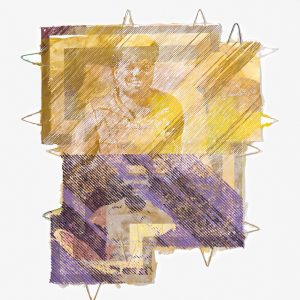
Tomashi Jackson, detail from Brown II, 2021. Image courtesy of the artist and the Tilton Gallery
Tomashi Jackson: Brown II
September 20, 2021–January 15, 2022
Tomashi Jackson’s Brown II, commissioned by the Harvard Radcliffe Institute, explores the landmark Brown v. Board of Education of Topeka Supreme Court decision. Working with a research team of students Jackson interviewed experts and culled the Schlesinger Library archives to inform her practice and visual this historic moment.
Museum Committee Research Survey: Developing New Directions with College Art Association Member Input
posted by CAA — August 26, 2021
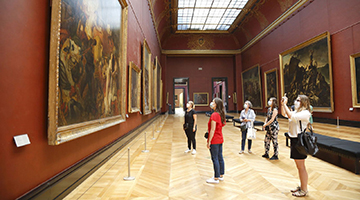
Visitors in the Musée du Louvre in 2020 © Antoine Mongodin
In the spring of 2021, the CAA Museum Committee initiated a survey of our members for the purposes of revising current directions and charting new ones that respond to updated knowledge of their concerns.
The results indicate that the Museum Committee‘s previous and planned Conference sessions and professional development workshops in 2021–2022 are appropriate, that they should publicize their presence more, and should use these projects and others to strengthen connections with professional museum groups; encourage diversity, decolonization, and the use of museums to educate; in addition to fight for salary equity. In this endeavor, they ask any interested CAA members to join and help in this mission.
Key Takeaways of the Report
In general, respondents likely appreciate the recent focuses and activities of the Committee, yet wish they would also move forward in new directions.
Both the CAA panels and professional development workshops should be continued and can be used to achieve the following desired goals culled from survey responses:
- Help publicize the Museum Committee more broadly.
- Give museum and curatorial studies students, young professionals, and museum professionals, particularly those from underrepresented groups, necessary resources as they start their careers, and mentor persons who want to become museum professionals or teach museum/curatorial studies, including in concert with art history coursework.
- Support the function of museums as pedagogical sites, especially during the processes of decolonizing and defining decolonization.
- Develop and disperse a list of curatorial/museum studies programs in American universities, including those offered on conjunction with art history training, and perhaps have a dedicated space on CAA’s website or another location with a link on the CAA website homepage to publicly disperse this list.
- Renew efforts to craft and chart the implementation of policy statements and best-practice guidelines particularly concerning salary equity and unpaid internships, among similar issues relevant to the field, and to do so in concert with professional museum organizations, such as the Association of Art Museum Curators (AAMC), American Alliance of Museums (AAM), and the Association of Academic Museums and Galleries (AAMG). One way to do this is to have present and future Museum Committee members actively reach out to persons within professional museum groups to create joint projects.
CWA Picks: August 2021
posted by CAA — August 03, 2021
The August “Picks” from the Committee on Women in the Arts respond to the danger and uncertainty that characterizes the contemporary moment and explore how gender figures into the possibility of imagining new forms of collectivity.
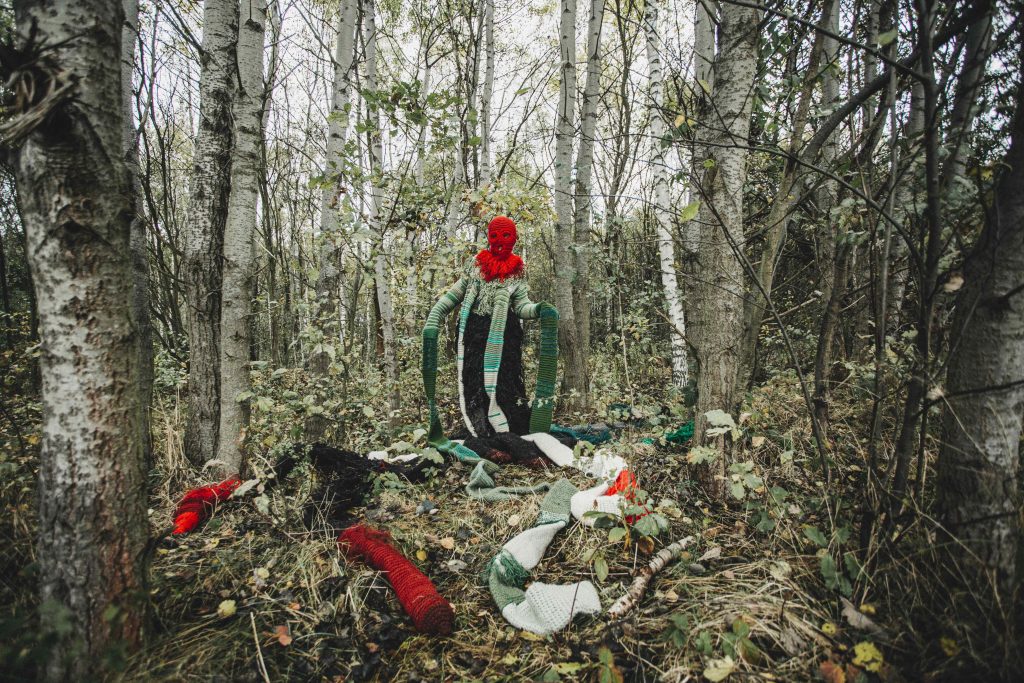
Malgorzata Markiewicz, “Medusa: Sensing-With and Thinking-With the World,” 2021. Print on textile. Photo by Grzesiek Mart
Mona Hatoum
April 16 – September 12, 2021
Institut Valencià d’Art Moderne
Mona Hatoum received the Institut Valencià d’Art Moderne’s Julio González prize in 2020, and this exhibition is a tribute to the influential body of work she has created over the last two decades. Across her installations, sculptures, drawings, and textiles, Hatoum’s investment in materializing spatial concepts as instruments of power asserts itself with a poetic and severe consistency. This spatial refrain emerges from the histories she inherits as an Arab woman, but Hatoum is also committed to showing that oppression can be mapped across the globe. Empty and haunted, ephemeral and permanent, each of Hatoum’s pieces creates an aperture for seeing and sensing the pervasive threat of vulnerability that cannot be cordoned off with neat geographical boundaries.
Double Trouble
July 8 – September 21, 2021
Institute of Contemporary Art of Maine College of Art
The double has often meant trouble for women, as it can encapsulate an assembly-line definition of woman and a Stepford-wife loss of control. This exhibition, however, features the work of five artists who explore the double as a resource for upending habitual definitions of the self without indulging in the fantasy that one can leave historical patterns behind. Creating echoes of bright colors and bold graphic forms, the artwork in Double Trouble is immersed in Pop-like patterns–wallpaper is a recurring motif–as if to watch for the differences that slip free from repetitions.
Malgorzata Markiewicz: Medusa: Sensing-with and thinking-with the world
July 15 – September 30, 2021
Triangle, Riverside, Illinois
Malgorzata Markiewicz’s Medusa makes the production of textiles a form of feminist world-making. Slowly, persistently, intentionally, over seven months of the Covid-19 health emergency, Medusa’s crocheted body emerged, spreading with its fifty-feet long tentacles into the space, first from Markiewicz’s home in Kraków, Poland, and then into her studio. Markiewicz made Medusa with three double-warp fabrics specific to Podlasie, a region in the northeast of Poland. The figure of Medusa stands at the center of this exhibition, masked and regal. Her densely textured form also appears in a film, walking across a meadow and through a forest, and in a series of photographs that stage a liberating journey that moves away from the fear, disgust, and shame traditionally associated with Medusa and toward a new feminist way of sensing-with and thinking-with with the world.
New Time: Art and Feminisms in the 21st Century
August 28 – January 30, 2022
Berkeley Art Museum Pacific Film Archives
New Time: Art and Feminisms in the 21st Century is a major survey exploring recent feminist practices in contemporary art. Rather than defining feminist art, New Time reveals all that the category can encompass as artists respond to the unfolding of history in the present. Although artworks made since 2000 are the primary focus, the objects and installations on view span several generations, mediums, geographies, and political sensibilities. New affinities emerge—the silhouettes of Kara Walker resonate with the sculpture of Kiki Smith—and convey the heterogeneous, intergenerational, and gender-fluid nature of feminist practices today.
Louise Bourgeois, Freud’s Daughter
May 21, 2021 – September 12, 2021
The Jewish Museum, New York
Louise Bourgeois viewed her artistic practice as a form of psychoanalysis. Rather than relegating that claim to a footnote or a biographical aside, this exhibition makes it central. Freud’s Daughter places Bourgeois’s original psychoanalytic writings, which include dream recordings and process notes, in dialogue with 40 works of art. These texts, many of which have not been seen before, become their own form of artmaking. They attest to Bourgeois’s onerous, often lyrical, and profoundly feminist struggle to loosen the Oedipal confines placed around women’s capacities to imagine and materialize different forms of feeling.
Wangechi Mutu: I Am Speaking, Are You Listening?
May 7 – November 7, 2021
Legion of Honor Museum, San Francisco
Wangechi Mutu’s I Am Speaking, Are You Listening? intervenes in the Legion of Honor’s homage to the classical imaginary of Euro-American culture. Many of her gorgeous sculptures portray earthy hybrid beauties who stand for the vulnerable physicality western culture systemically inflicts on people of African descent. Vibrant, damaged, and thoughtful survivors of colonial extraction, Mutu’s figures rhyme with the museum’s canonical objects but also register the pathologized differences Black bodies are made to bear. The Legion of Honor is known for Auguste Rodin’s The Thinker (1904), which dominates its atrium entrance, and in his field of vision, Mutu has placed bronze sculptures of corpses covered with opaque blankets that suggest a crime scene. Except for the hands with polished nails and the feet decorated with red stilettos that stick out from the edges of the blankets, the bodies are not visible. But the feminized excesses—one of the artist’s prominent themes—evoke other possibilities for thinking that Mutu has begun to create through her dialogue with histories of willed silence.
Eileen Agar: Angel of Anarchy
May 19 – August 29, 2021
Whitechapel Gallery, London
This definitive retrospective of the British-Argentinian artist Eileen Forrester Agar (1899–1991) demonstrates just how much her work absorbed and foresaw the twentieth century’s wide array of aesthetic innovations. Agar was included in the 1936 International Surrealist Exhibition, and her rebellious oeuvre certainly captures its feminist potential, but Angel of Anarchy resists the impulse to identify her work only or primarily through Surrealism. Exhibiting over 150 artworks and newly discovered archival material, Angel of Anarchy captures Agar’s nimble travels through artistic mediums, movements, and hierarchies to better see the bright, undulating landscapes of erotic anarchy she created in their wake.
Pauline Curnier Jardin, Fat to Ashes
April 12 – September 19, 2021
Hamburger Bahnhof, Museum für Gegenwart, Berlin
In 2019, the French artist Pauline Curnier Jardin won the Preis de Nationalgalerie, and the film installation Fat to Ashes lives up to the epic scale that might be associated with such an honor. In the historic halls of the Hamburger Banhof, Jardin has created a large-scale amphitheater with material that looks like pie dough—edible, soft, and supple. Inside the arena is a bright red seating area, and the elevated screen appears amidst draped fabrics of translucent pink. The film interweaves three scenes: the procession of St. Agatha in Sicily, the slaughter of a pig, and the carnival in Cologne. Jardin’s cinematic triptych, with its sensual, tactile visuality, portrays the excess and death swirling around the center of collective existence.
Lynn Hershman Leeson: Twisted
June 30 – October 3, 2021
New Museum of Contemporary Art, New York
Twisted is Lynn Hershman Leeson’s first solo exhibition in New York City and tracks her prescient engagement with technology—its sinister and generative impact on corporeal life. The exhibition displays Leeson’s drawings (many of which have never been seen before) and wax sculptures from the 1960s, and together they express her interest in the body’s porous boundaries and detachable parts. Twisted of course includes Roberta Breitmore (1973–1978), the well-known performance series that exemplifies feminist art’s look into the empty heart of identity. A new multi-media installation, Infinity Engine (2014–present), is also part of Twisted. Commissioned by ZKM Center for Art and Media Karlsruhe, Infinity Engine is a simulacrum of a genetics laboratory that replicates its world of science, technology, and self. “Twisted” is a great title for this exhibition: it evokes a sinister sickness, cords, the strands of a DNA molecule, and collaboration. Working with scientists, Leeson revitalizes the historical connection between art and scientific research, but her primary collaborators have always been viewers. She addresses her audience with her accessible message that technology does not have to cancel out the human, but can actually be part of realizing its ethical potential, and creates generous invitations for a participatory response.
CWA Picks: June 2021
posted by CAA — June 29, 2021
The June Picks from the Committee on Women in the Arts highlight a selection of events, exhibitions and calls for work that include feminist and womxn artists, and address issues about social justice, the visibility of marginalised subjects, and the digitisation of the everyday. Several of the exhibits engage with the question of relations among the human, non-human and other-than-human bodies but also corporeal entanglements that embed us within the world through embodied experiences.
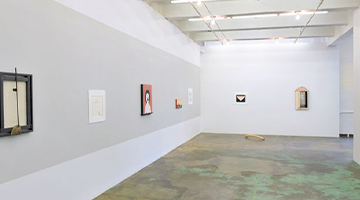
“Anne Minich: Her Bone” installation view of interior gallery
Anne Minich, Her Bone
May 22 – June 26, 2021
Thomas Erben Gallery
This solo exhibition of the Philadelphia-based artist Anne Minich engages with the materiality of the human body. Working across different media Minich explores the themes of pleasure and sexual desire, memory and intimacy, to develop personal mythologies and question the boundaries of corporeality. Her transversal language emphasizes the lived experience of being in the body, living it and dying in it. The works reveal multiple kinships and invite a closer inspection of bodily experiences. The interrelationality is emphasized by unexpected juxtapositions between the media used by Minich, including drawings, wooden sculptures and three-dimensional paintings, and found objects such as shells, fruit pits or bones. Intimate and fragile, these painterly collages invite the viewer to feel and sense with.
Susanne M. Winterling, TEMPERATE – under your skin, nano carriers through the web of life
May 20 – September 19, 2021
Schering Stiftung
Susanne M. Winterling’s installation TEMPERATE confronts the viewer with a fluorescent bacterium, inviting us to engage with nano-organisms that are invisible to the naked eye. Questioning that which is visible and that which remains invisible, the artist created large projection surfaces that show the bacterium moving across scientific images. Playing with scale, Winterling offers us another perspective in which magnified nano-organisms are larger than the visitors, articulating complex relationships between humans and microorganisms and interrogating the relevance of anthropocentric views. Inspired by research on drug-loaded nanocarriers, Winterling collaborated with Simone Schürle, a biomedical engineer and professor for Responsive Biomedical Systems at ETH Zurich along with her research team to bring awareness to the productive relations between forms of life and specifically bacteria equipped with therapeutic agents.
SHILPA GUPTA: Today Will End
May 21 – September 12, 2021
M HKA – Museum of Contemporary Art Antwerp
Shilpa Gupta’s multimedia works bring visibility to the contemporary art scene in Mumbai Critically engaged with identity politics and psychological discourse, Gupta articulates relationships between human diversity and new aesthetics, exploring entanglements between subjectivity and perception often via interactive installations and audio and visual technologies. Context-related and referring to specific cultural and socio-political framings, her works concern themes that, at the same time, are open to interpretation and may become localised to develop new micro-narratives. Gupta’s interest in conflict, borders and censorship can be seen in this exhibition, in which the artist traces the role of diverse media in the production of fear.
Hito Steyerl. I will survive. Physical and virtual spaces
May 19 – July 5, 2021
Centre Pompidou
This exhibition of Hito Steyerl’s major works is a retrospective in reverse, showing the most recent pieces at the beginning, which then lead to the artist’s 1990s films displayed at the end of the show. It is a collaboration between Centre Pompidou and the K21 Düsseldorf. The multimedia installations, some of which have been designed specifically for the exhibition, are a satirical and critical gesture exploring the relationships between the digital worlds, artistic creativity and its presentation, the pandemic and current social conditions. Steyerl’s point of departure is the architecture of the Centre Pompidou, which for over forty years has supported the heritage mission of the museum as a democratic project of a cultural resource centre. Steyerl engages once again in an intimate and astute manner with the invisible contradictions that drive the power structures of global capitalism and interrogates the challenges encountered by cultural institutions in the current moment of crisis.
AD MINOLITI: Biosfera Peluche / Biosphere Plush
July 24, 2021 – May 8, 2022
BALTIC Centre for Contemporary Art
The exhibition of works of Ad Minoliti, a contemporary Argentine artist, takes place in the Baltic in the form of an ‘alien lounge’. Imagined as an extra-terrestrial space that goes beyond the idea of nature, it traverses dichotomous gender and anthropocentric narratives exploring non-binary and non-human identifications and embodiments. This first institutional presentation in the UK and the largest exhibition to date in Europe also features Minoliti’s ongoing project The Feminist School of Painting, which transforms part of the gallery space into an active classroom holding bi-weekly painting workshops. In her practice Minoliti activates feminist and queer theory to deconstruct the traditional genre of painting and art historical narratives, and generate alternatives that are intersectional, inclusive and diverse.
A Yellow Rose Project
June 1 – September 15, 2021 (virtual tour available)
BU Art Galleries
A Yellow Rose Project, a collaborative photography project between women from the United States, was initiated in 2019 to mark the 2020 centennial anniversary of the ratification of the 19th Amendment. On that day women wearing yellow roses, symbolising the fight for equal representation, gathered into a concerted bodily collective and waited to hear if their right to a voice in the government would finally be granted. The photographs in the project engage with the complicated narratives attached to the 19th Amendment and its anniversary, and confront a multitude of histories, some of which are more visible than others. A remarkable historical event to celebrate also marks a troubling moment when only some women were given the right to vote. The collection of visions and voices opens up a dialogue on the power of the movement that led to the ratification, but also on erasures and the need to remember. The presented body of work celebrates women’s resilience and bodily gestures, including the gesture of the taking a photograph, that create a visual archive of vulnerability that through a concerted collective effort becomes a strength in the common.
Photo Vogue Festival 2021: REFRAMING HISTORY Open Call
Who is telling the story? The 6th edition of the Photo Vogue Festival ‘REFRAMING HISTORY’ invites projects that propose an alternative, different way of telling a tale. Selected projects will be featured in the exhibition.
CWA Picks: May 2021
posted by CAA — June 04, 2021
The May Picks from the Committee on Women in the Arts highlight a selection of events, exhibitions and calls for work that include feminist and womxn artists, and address issues about social justice, climate change and the ongoing global pandemic. Several of the exhibits expand and rework traditional narratives of American history, providing a more inclusive account of our country’s past and its current state.
Sonya Clark: Heavenly Bound
April 10 – September 12, 2021
deCordova Sculpture Park and Museum
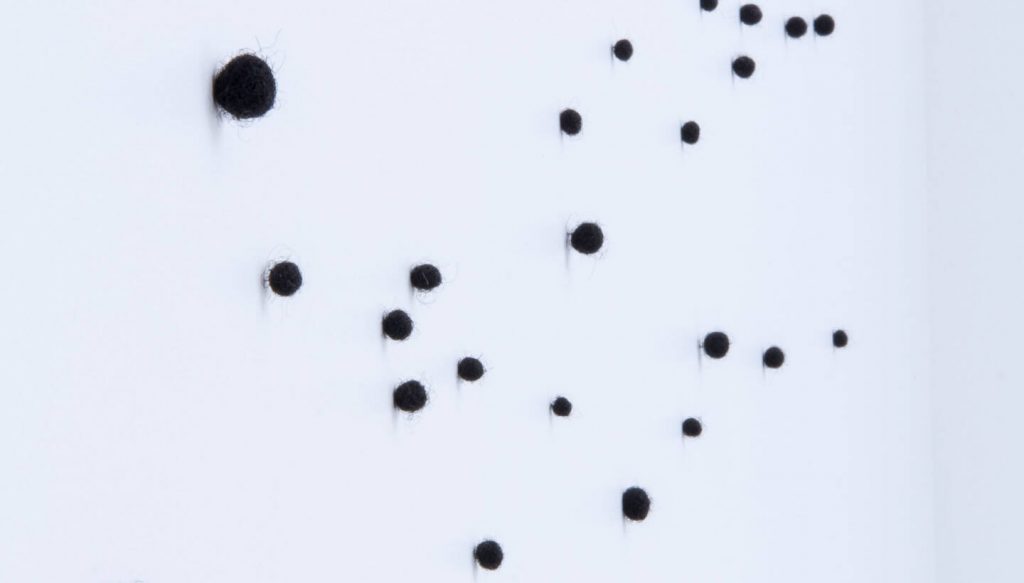
Sonya Clark’s Heavenly Bound, currently on view at the deCordova Museum and Sculpture Park, explores the Underground Railroad and its connection to those seeking freedom throughout history and today. The piece includes a series of large-scale photographs of abolitionists, a night sky made up of the artist’s hair, a parachute installation and a book of cyanotype constellations, which all reference the treacherous journey that self-emancipated Black Americans experienced during their escape.
Personal and Political: Women Photographers, 1965–1985
May 1 – November 28, 2021

Adriana Lestido, Mother and Daughter from Mothers of Plaza de Mayo, 1982. Courtesy Museum of Fine Arts, Boston
Personal and Political: Women Photographers, 1965–1985 includes the work of many well-known American photographers including Diane Arbus and Nan Goldin alongside recently acquired works by lesser-known artists working internationally such as Adriana Lestido and Paz Errázuriz. The exhibit focuses on a specific time in photographic history when women were becoming professional photographers at a higher rate than ever before.
Sharon Harper: Returning Light
April 9 – June 25, 2021
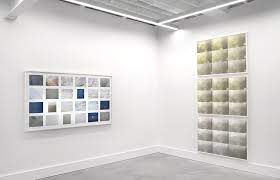
Installation view
Sharon Harper’s Returning Light, currently on view at Rivalry Projects, includes several series of photographs that investigate the cycles of light, providing a more macro view of time and space. Through the imprint of light Harper’s work instills a sense of awe and points toward the changing climate and landscape of our world.
Ground/work
Aug 1, 2020 – Oct 1, 2021
Ground/work includes the installation work of Kelly Akashi, Nairy Baghramian, Jennie C. Jones, Eva LeWitt, Analia Saban, and Haegue Yang. Each of the site-specific pieces considers the relationship between sculpture and nature as well as notions of time, scale and transformation.
Judy Chicago Art Education award
Deadline: June 1, 2021
The Judy Chicago Art Education Award is open to scholars, artists, and educators whose projects engage with the Judy Chicago Research Portal. The award includes a $2,500 prize along with a certificate to be presented in July 2021 in Belen, New Mexico.
Allison Katz: Artery
May 22 – October 31, 2021
Allison Katz’s exhibition, Artery includes paintings, ceramics and posters created in the past 18-months during a time of ongoing national lockdowns. The title of the exhibit speaks to the artist’s interest in networks and systems of connection as well as the spaces in between what is shared and private. Katz’s work will be on display at Nottingham Contemporary through October 2021 and will then be revisualized for the Camden Art Centre in January 2022.
On Hannah Arendt: What is Authority?
April 26 – June 6, 2021
What is Authority? exhibits work from Lili Dujourie, Everlyn Nicodemus, Lerato Shadi and sound artist Laima Leyton. The exhibit is part of a year-long series of shows inspired by Hannah Arendt’s writings about power structures.
Girl You Want
May 1 – August 1, 2021
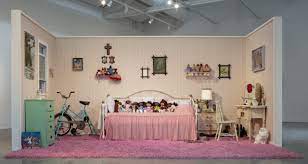
Genevieve Gaignard, Black is Beautiful, 2016. Installation view in ArtYard’s gallery, 2021. Courtesy of the artist and Vielmetter, Los Angeles, photo by Paul Warchol
Girl You Want, curated by J. Vanessa Lyon, includes the work of Genevieve Gaignard, Julia Greenburger, Jen Liu, Josh Rabineau, Wendy and Beatrice Red Star, Karinne Smith, Ivy Stewart, and María Vargas Aguilar. The exhibit is a broad exploration of what it means to be a girl and traverses the space between girlhood and adulthood.
Promise, Witness, Remembrance
April 7 – June 6, 2021
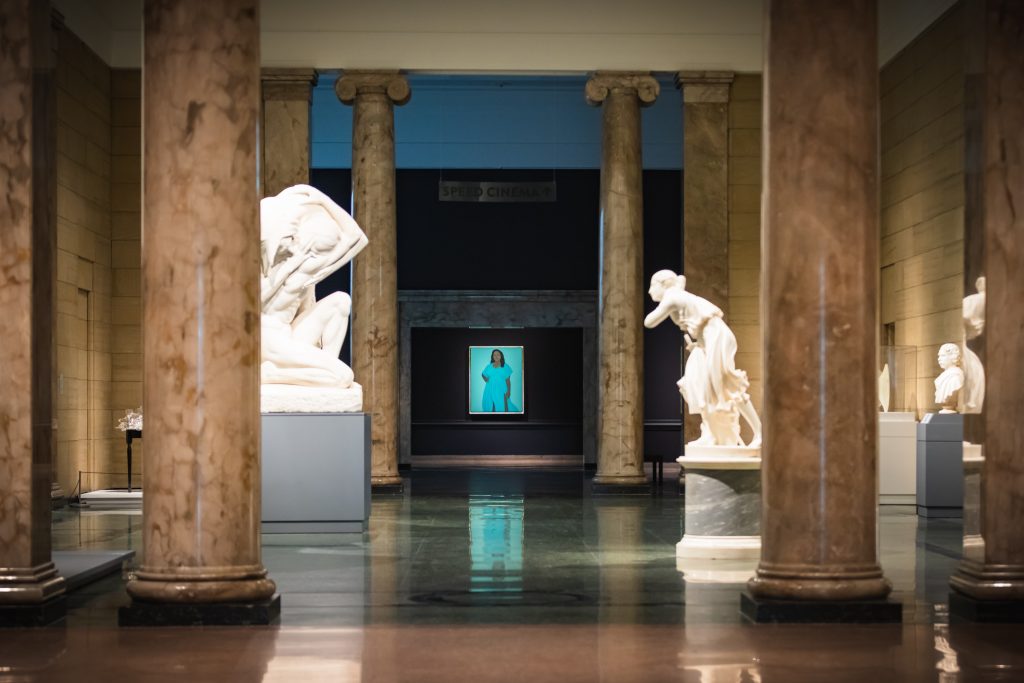
Installation view, Promise, Witness, Remembrance, Speed Art Museum, Louisville, Kentucky. Photo by Xavier Burrell
Promise, Witness, Remembrance was created under the direction of Breonna Taylor’s family along with a committee of artists, mental health professionals and community members. The exhibit pays tribute to Taylor’s life, reflecting on her killing in 2020 and the subsequent protests that took place both locally in Louisville and globally. The artists in this exhibit explore the disconnect between what the American dream has promised and the reality for many of its citizens.
Artist Residency
Deadline: October 1, 2021
Turkey Land Cove Foundation (TLC) offers a residency opportunity in Martha’s Vineyard for women who are in any stage of a project from development to completion. TLC specifically supports applicants who could not otherwise personally finance a residency. Room and board along with travel expenses are provided.
Call for Submissions
Deadline: July 15, 2021
For the 20th annual issue, Mom Egg Review is requesting submissions that respond to the idea of “Mother Figures.” Artwork and Literary pieces including poetry, nonfiction, short fiction, and hybrid works should be submitted by July 15, 2021 for consideration. You do not need to be a mother to participate.
CWA Picks: April 2021
posted by CAA — April 27, 2021
Committee on Women in the Arts celebrate a selection of events, exhibitions and calls for work and participation featuring feminist and womxn artists, and address issues about social justice and ethics from intersectional and transnational perspectives. To acknowledge that Covid-19 continues but also to begin envisioning the re-opening of public spaces, we have decided to feature both on-line and in-person events.
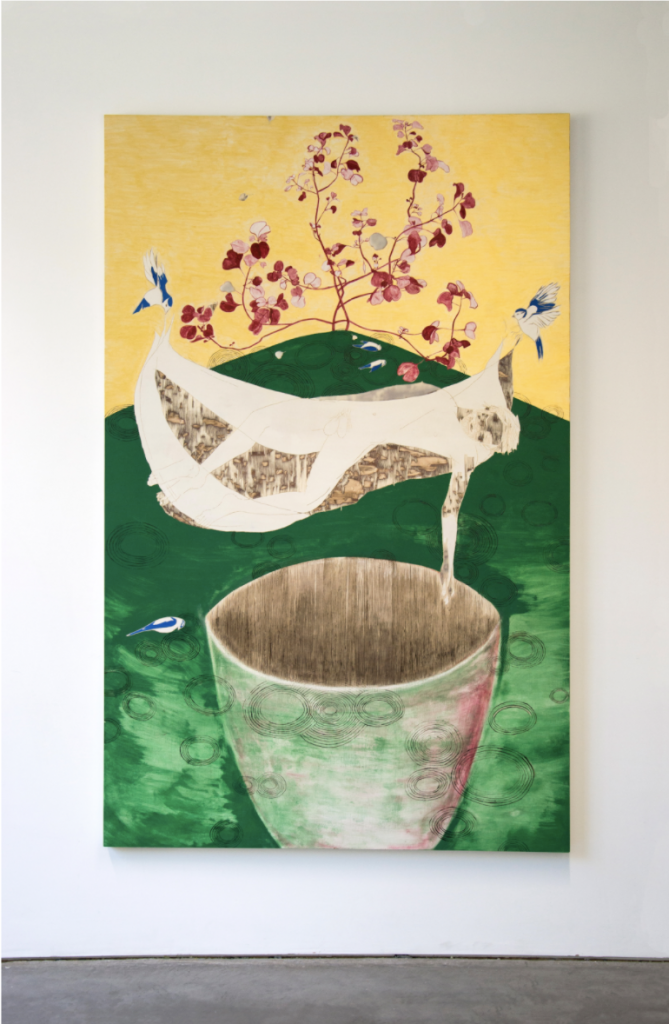
Gaia Fugazza, Blue Tits, 2020, Mineral pigment, beeswax, oil paint, watercolor on carved wood, 180 x 115 cm
Love Letters
April 10 to July 2, 2021
On-line
http://almanacprojects.com/public-programme/love-letters
An epistolary project developed by Basia Sliwinska and Astrid Korporall, Love Letters is a virtual platform that responds to the rise of gender-based violence around the globe and fosters feminist love across the national and cultural boundaries Covid-19 has made more severe. The October 2020 ruling by Poland’s Constitutional Tribunal that abortions in the case of fetal defects are unconstitutional is its animating occasion. Love Letters features the work of six artists–Gaia Fugazza, Małgorzata Markiewicz, Amanda Millis, Joanna Rajkowska, Viktoriia Tofan, and Katarzyna Zimna—who have created work to reflect on the fraught political landscape that gave rise to such a ruling. Proceeds from the sale of the artwork will benefit the All-Poland Women’s Strike (Ogólnopolski Strajk Kobiet: OSK). Composed by Sliwinska and Korporall, the letters that accompany the artwork featured in the on-line exhibition space attend lovingly to how they address the necessity of feminist solidarity in a broken, precarious world.
Lorraine O’Grady: Both/And
March 5 to July 18, 2021
Brooklyn Museum of Art, Elizabeth A. Sackler Center for Feminist Art
https://www.brooklynmuseum.org/exhibitions/lorraine_ogrady
Long overdue and much-anticipated, Both/and is Lorraine O’Grady’s first retrospective. Featuring four decades of artwork that spans performance art, conceptualism, and institutional critique, this exhibition highlights the feminist and decolonial commitments of O’Grady’s oeuvre, which is materially idiosyncratic but thematically consistent. Both/and foregrounds O’Grady’s challenge to fixed positions while also tracking how she has kept western modernity’s reliance upon and erasure of Blackness squarely in view.
Born in Flames: Feminist Futures
April 28 to September 12, 2021
The Bronx Museum of the Arts
http://www.bronxmuseum.org/exhibitions/born-in-flames-feminist-futures
This inter-generational group exhibition speculates on a damaged past for the possibilities of a joy-filled future. Taking its title from Lizzie Borden’s 1983 science fiction film that explored the unjust remainders of a socialist revolution, the spirited, phantasmatic, and highly physical artwork featured in Born in Flames seeks to imagine worlds beyond the entrenched logic of capitalist exploitation. Together the artwork declares that the figurations of women, and the oppressions they have carried in historical time, must be central to such hopeful gestures if they are going to take hold in future realities.
Memorializing the Natural Environment: Maya Lin in conversation
Thursday, May 6, 2021, 6–7 p.m.
Virtual Conversation
https://www.colby.edu/lunderinstitute/memorializing-the-natural-environment/
Artist and designer Maya Lin will be in conversation with Colby University faculty about the process of remembering all that environmental degradation is taking from the planet and how to utilize that archive to forestall further disasters. She will reflect on What is Missing? her multimedia project devoted to the global biodiversity crisis related to the disappearance of habitats. What is Missing? underscores Lin’s talent for yoking the microscopic together with the monumental and sculpting the landscape with heavy but delicate inscriptions of loss.
Senga Nengudi: Topologies
May 2-July 25, 2021
Philadelphia Museum of Art
https://philamuseum.org/calendar/exhibition/senga-nengudi-topologies
Chronicling the entirety of her oeuvre, Topologies offers an in-depth look into Nengundi’s artwork and its precise deployment of the opaque, distorted, and porous. Featuring her sculptures, environmental installations, and performances, and going back to her career’s beginnings in the 1970s, Topologies shows the various and inter-related ways this key figure of the Black American avant-garde suspended the body in ceremonial planes composed of fragile and tough materials as it awaits a more just ground.
Family Tree Whakapapa: Elin, Madeleine, Sarah and Susanne Slavick
April 21 to June 13, 2021
Long Gallery, The Pah Homestead, TSB Wallace Arts Centre
Auckland, New Zealand
https://www.wallaceartstrust.org.nz/exhibitions/whakapapa
This exhibition brings together the artwork of four sisters living in different parts of the globe and focuses on the related and but distinct ways they engage with the arboreal imagination. Tangled into their photographs, paintings, life histories, and political commitments, the trees in their artwork are intricate lines, bold shapes, diffuse traces, and stylized patterns. Defying the ease with which the genealogical and botanical connect in the figure of the family tree, the Slavick sisters make it a thing of wonder: rooted in the ground and multiplying in our imaginations, family trees are botany and biology written with longing, hope, history, and loss.
Lygia Pape: Tupinambá
April 24 to August 1, 2021
Hauser and Wirth, Los Angeles
https://www.hauserwirth.com/hauser-wirth-exhibitions/31619-lygia-pape-tupinamba
This exhibition, Lygia Pape’s first solo show in Los Angeles, features her Tupinambá series, one of the final bodies of work created by this founding member of Brazil’s Neo-Concrete movement. Pape’s use of bright red artificial feathers is a central feature of Tupinambá. Sensuous and regal, they cover chairs, boxes, and balls and point to Pape’s sustained interest in the Indigenous people of Brazil. With her understated surrealism, Pape makes the objects look like dense fragments of far-away rituals. The Memória Tupinambá, a series of three balls covered with red feathers and punctuated with plastic body parts, suggests their sexualized violence: one holds out a hand streaked with blood, one shows a bloody foot, and the third displays two plastic breasts.
Oh, I’m definitely a dessert person
April 24 to May 28, 2021
WHATIFTHEWORLD
Western Cape, South Africa
http://www.whatiftheworld.com/presentation/oh-im-definitely-a-dessert-person/
The I-phone plays multiple roles in Talia Ramkilawan’s charming pictures, which she makes by “rug hooking” bright pastel fabrics, wools, and hessian. It is clear from the accidental fragments, titillating hints of sex, selfie shots, and everyday domestic scenes (birthday parties) and objects (a cake, vases of flowers, a dildo), that Ramkilawan draws from her camera roll, but she also places I-phones in the images themselves. Complete with heart emojis, the phones transmit the unabashedly sweet touch of these images, their “hand-held” feel and hot-pink youth. Ramikilawan’s titles, talky poem-“texts” of one or two lines, crystallize the Black femme wit of her crafty depictions.
CWA Picks February-March 2021
posted by Allison Walters — March 12, 2021
February and March Picks from the Committee on Women in the Arts celebrate a selection of events, exhibitions, and calls for work and participation featuring feminist and womxn artists and address issues about social justice and ethics in intersectional and transnational perspectives.
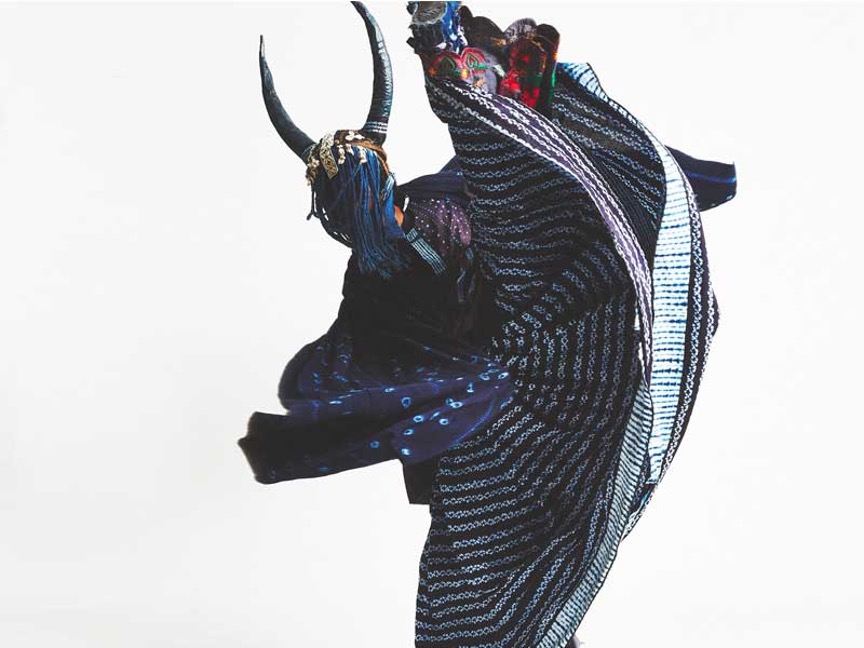
Dancer Christ Walker in his portrayal of Laura Anderson Barbata’s Rolling Calf in Intervention: Indigo, part of the exhibition Laura Anderson Barbata: Transcommunality, Newcomb Art Museum of Tulane University. Photo by Rene Cervantes.
Laura Anderson Barbata: Transcommunality
January 16–October 2, 2021
Newcomb Art Museum of Tulane University, New Orleans, LA
Laura Anderson Barbata’s (b. 1958) socially engaged, activist, and environmentally sustainable practice is on view in a dynamic exhibition curated by Laura Blereau at the Newcomb Art Museum. Transcommunality enriches bold concepts of global collaboration and cultural exchange, civil and indigenous rights, and human connection and belonging across geographical borders. Anderson Barbata was born in Mexico City, Mexico, and works between Mexico and the United States. This exhibition unites five projects and series across the Americas, showcasing a wide swath of media and community-based approaches such as street theater, arts education, printmaking and book making, textiles, wearable sculpture, photographs, and stilt dancing. Among the works on display are paper making techniques and workshops utilizing Ye’Kuana Amazon wood printing blocks for body printing and printmaking in Venezuela (Amazonian moriche palm fiber); fabric costumes worn by stilt dancers and carnival performers, including Moko Jumbies in Trinidad and Tobago and the Brooklyn Jumbies of New York, West Africa, and the Caribbean, as well as the significant artisan culture of los Zancudos de Zaachila from Oaxaca, Mexico. Transcommunality also documents Anderson Barbata’s extraordinary intervention and efforts to repatriate the body of Julia Pastrana, a nineteenth-century Mexican woman grotesquely exploited for her physical disabilities. As Anderson Barbata avers, reciprocity fundamentally underscores her artistic work and approach.
Mildred Thompson: Throughlines, Assemblages and Works on Paper from the 1960s to the 1990s
February 18–March 27, 2021
Galerie LeLong & Co., New York
A selected survey of Mildred Thompson’s (1936–2003) mature practice into the 1990s, Throughlines explores the African American artist’s dynamic experimentation in found and manipulated wood, free-standing assemblages and sculptures, and dynamic utilisation of abstraction in works on paper and prints.
February 6–March 9, 2021
Leslie–Lohman Museum of Art, New York
The first comprehensive retrospective on Chicana artist Laura Aguilar (1959–2018), Show and Tell presents more than 70 photographs and videos spanning three decades. The development of Aguilar’s performative, feminist, and queer genres encompass candid portrayals of LGBTQ+ and Latinx communities; nude self-portraits serve as powerful investigations on the complicated colonial histories of racial and sexual injustice and personal expressions on vulnerability and beauty.
January 21–May 8, 2021
Ulrich Museum of Art, Wichita, Kansas
This exhibition explores Renée Stout’s (b. 1958) print portfolio from 2012 titled Ghosts, currently in the collection of the Ulrich Museum of Art, and in dialogue with six Yoruba objects from present-day Nigeria in the Wichita State University’s Lowell D. Homes Museum of Anthropology. Stout’s seminal artistic research into the histories of African American heritage and the African diaspora are demonstrated in Ghosts, haunting monotypes that touch upon syncretic belief systems and visual narratives of Haitian Voudou and American Voodoo and Hoodoo, especially as these religions are expressed in marginalized Black communities.
February 25–April 17, 2021
Nara Roesler, New York
The inaugural solo exhibition in the US of Brazilian multidisciplinary artist Amelia Toledo (1926–2017), the artist is best known for her constructive investigations that traverse the material boundaries of the natural world and landscape, and offer new definitions of ecological concretism through the technical and physical examination of shells, stones, and wood. Toledo’s later Penetrables, on view, explore inhabitable space through hanging color fields as raw canvas and organic pigments. Although associated in her career with many of the foremost postwar neo-concrete Brazilian artists, including Mira Schendel, Tomie Ohtake, Hélio Oiticica, and Lygia Pape, Toledo maintained a separate identity. On her hands-on and observational approach to her practice, Toledo offered: “It’s not even just a question of difference processes; each material constructs itself, proposes itself in the form of certain consequences.”
Les Femmes Folles Presents: Feminists Connect
Launching March 2021
This curated online exhibition includes work by 40 international artists, artist statement and bios received in response to a call inviting participants to reflect on the theme Feminist Connect and the possibilities for the arts and feminist enquiry. Driven by feminist ethics of care, the curators of this online art exhibit, Sally Brown and Leslie C. Sotomayor, became actively invested in selecting artworks that engage through lived experiences and embodiments into conversations on larger social issues such as love, grief or invisibility. The curatorial process was dialogic and centered on co-creation of knowledge with care.
The Vagina Museum’s ‘Cliterature’ book club – Feminism, Interrupted
Thursday 22nd April 2021, 7:00 PM – 8:30 PM UK Time
Zoom
Cliterature, the Vagina Museum’s book club, welcomes everyone to engage in readings and discussions of fiction, non-fiction, essays and poetry. The April event focuses on a non-fiction book Feminism, Interrupted: Disrupting Power by Lola Olufemi, which calls to reclaim feminism from its neoliberal appropriations as a radical tool for fighting back against structural violence and injustices, including, among others, reproductive justice, transmisogyny and gendered Islamophobia.
February 1st – June 6th 2021
Zachęta – National Gallery of Art, Poland
Rhizopolis, a set design and an artistic installation, is not a phantasy. It welcomes us to a world of hypothetical future after an ecological catastrophe that is inevitable in the Antropocene. Imagining an underground city underneath a forest inhabited by refugees from the surface of Earth, Rajkowska calls into question our faith in continuous progress and civilizational development and expansion. In the context of the pandemic, Rhizopolis offers an opportunity to revisit survival scenarios and techniques and invites us to consider radical dependence and interconnectedness in which nature makes our lives possible.
CWA Picks: December 2020
posted by Allison Walters — December 15, 2020
December CWA Picks
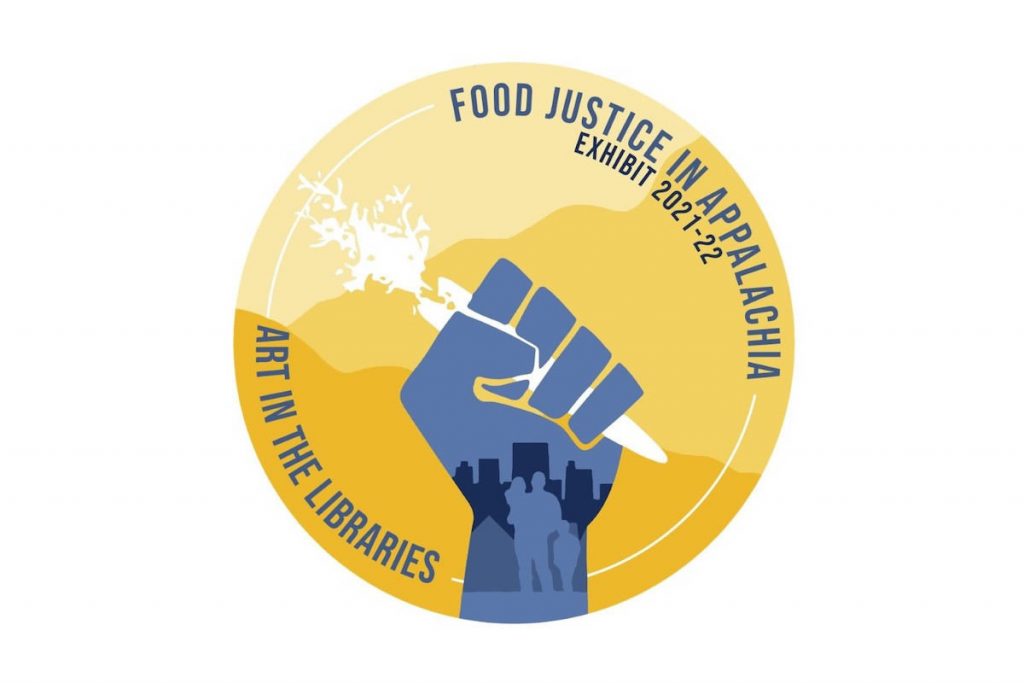
December Picks from the Committee on Women in the Arts celebrate a selection of events, exhibitions and calls for work and participation featuring feminist and womxn artists and addressing issues concerning social justice and ethics in intersectional and transnational perspectives.
Food Justice In Appalachia: Call For Content; An exhibit by WVU Libraries in partnership with the WVU Food Justice Lab and the WVU Center for Resilient Communities.
https://exhibits.lib.wvu.edu/gallery_foodjustice
The call (deadline on February 1st, 2021; exhibition launch in August 2021) invites submissions exploring concepts of food justice, food sovereignty and community food security. Selected works will be included in an exhibition, which focuses on ways in which the food system shapes landscapes, defines economic systems and informs cultural practices.
Curators Conversation: Curating the Digital — a Webinar hosted by Art Curator Grid and SALOON London on December 17th, 2020
https://www.eventbrite.pt/e/curators-conversation-curating-the-digital-tickets-129483736341
Curators Julia Greenway and Noelia Portela will be in conversation with SALOON London co-founder Mara-Johanna Kolmel to explore the online spheres and the digital realm in curatorial practices. SALOON London is a professional network for women in the arts with the objective of creating an open forum to exchange ideas, experiences and initiate collaborations.
Online exhibition accompanying On Transversality in Practice and Researchconference 9-11 December 2020, organised by PhD students from across the UK
https://ontransversality.wordpress.com/exhibition/
This exhibition presents the works of Maria Teresa Gavazzi, Emily Beaney, Stav B and Caio Amado Soares, and Niya B. who reflect on the issues addressed by the conference themes: interdisciplinarity, intersectionality and transnationalism in research praxis, from anti-racist, decolonial, feminist, and queer methodological perspectives.
Feminist Art Coalition (FAC)
https://feministartcoalition.org/
FAC, a platform for art projects informed by feminisms, encourages collaborations between arts institutions with the aim of promoting and advocating for social justice and structural change. A series of collaboratively conceived events and exhibitions planned for 2020 have been postponed to 2021 because of COVID-19 closures.
Our inheritance was left to us by no testament prelude exhibition to OnHannah Arendt: Eight Proposals for Exhibition; Richard Saulton Gallery, London
Richard Saulton Gallery launches its programme ‘On Hannah Arendt’ in January 2021 addressing the political philosopher’s 1968 publication Between Past and Future, in which Arendt questions the lost freedoms in the period post World War II and the threads of broken traditions. The group exhibition Our inheritance was left to us by no testament, a prelude to the launch, features the work of seven women artists from Eastern Europe, Alina Szapocznikow, Barbara Levittoux-Świderska, Renate Bertlmann, Běla Kolářová, Jagoda Buić, Jolanta Owidzka and Erna Rosenstein, that speak to possibilities in art without tradition.
